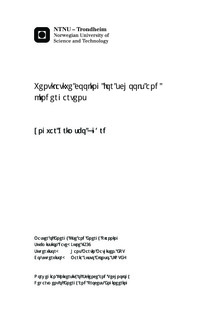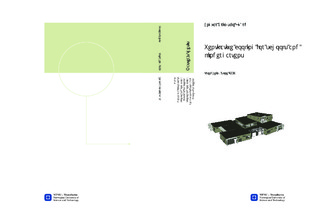| dc.description.abstract | As the building industry strives towards the goal of ZEB (zero emission/energy buildings), new and refurbished modern day buildings have to relate to ever increasing standards regarding energy efficiency and energy consumption. This result in well insulated buildings with low air leakages offering reduced heating demands. One of the downsides of well insulated buildings is that they are easily warmed up to such a degree that in order to sustain an acceptable indoor climate, removal of excess heat becomes a necessity. Ridding the excess heat is often done through means of mechanical cooling, however, energy consumption for mechanical cooling is not considered compatible with the desire to achieve ZEB. Here, ventilative cooling comes in to play.
Ventilative cooling refers to the use of ventilation air in order to reduce or eliminate the need for mechanical cooling. The technique is increasingly gaining in popularity, and is by many considered crucial in realizing ZEB.
This thesis examines the application of ventilative cooling systems in schools and kindergartens through a thorough case study of Solstad kindergarten in Larvik, Norway. The kindergarten is fitted with a mixed-mode ventilation system integrating mechanically balanced ventilation with natural ventilation from motor controlled windows. The overall aim is to evaluate the ventilation solution applied at Solstad as a whole in regards to both indoor climate, energy consumption and to some degree economics. This is achieved by a comparison with a conventional mechanically balanced ventilation system.
As a tool in the process, indoor climate and energy simulations were performed utilizing the computer software, IDA ICE, and in order to investigate the indoor climate, indoor temperature and CO2-levels were utilized as the defining measure in regards to thermal comfort and air quality.
Simulation result indicate that solutions like that present at Solstad could cut the annual energy consumption by as much as 14 % compared to a conventional solution, making the operation slightly cheaper than its all mechanical counterpart. However, it is thought that installation and maintenance of a mixed-mode system such as the one studied, is more expensive seeing that it consists of two separate, fully fledged systems working in combination.
Overall, it seems that the Solstad solution have little problems in satisfying an acceptable air quality, at least not in regards to CO2-levels. When looking at the thermal environment and indoor temperatures, it is found that for really warm days, it is hard to sustain acceptable temperatures without the use of mechanical cooling. However, for moderate summer climates, the Solstad solution looks to outperform that of conventional solutions in terms of temperature and energy consumption. The exception is that larger temperature spans are experienced during the hours of occupancy. | |

